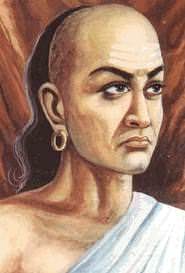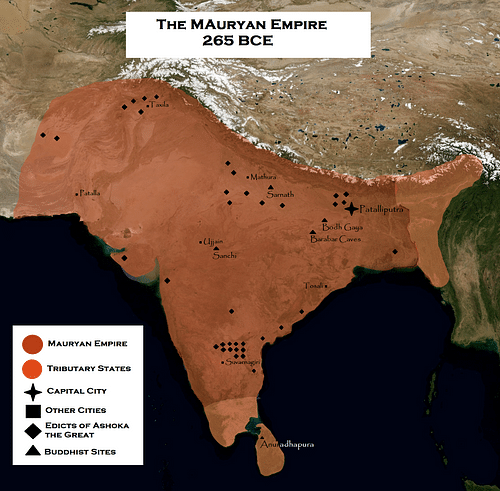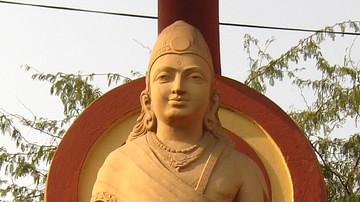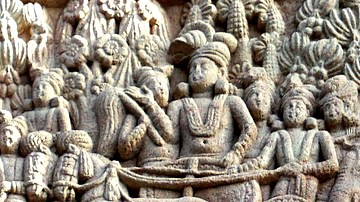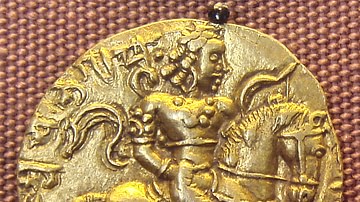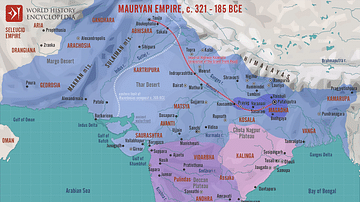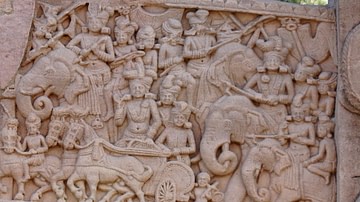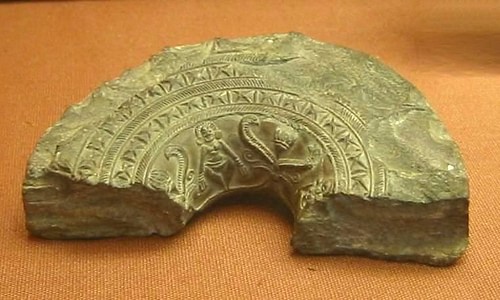
The Arthashastra is an Indian treatise on politics, economics, military strategy, the function of the state, and social organization attributed to the philosopher and Prime Minister Kautilya (also known as Chanakya, Vishnugupta, l. c. 350-275 BCE) who was instrumental in establishing the reign of the great king Chandragupta Maurya (r. c. 321-c.297 BCE), founder of the Mauryan Empire (322-185 BCE).
The Arthashastra is thought to have been written by Kautilya as a kind of handbook for Chandragupta instructing him in how to reign over a kingdom and encouraging direct action in addressing political concerns without regard for ethical considerations. The name of the work comes from the Sanskrit words Artha (“aim” or “goal”) and Shastra (“treatise” or “book”) and the goal of the work is a comprehensive understanding of statecraft which will enable a monarch to rule effectively. The title has therefore been translated as The Science of Politics, The Science of Political Economy, and The Science of Material Gain; this last because Artha is understood in Hinduism as one of the fundamental aims of human beings in pursuing wealth and social status.
The Arthashastra is informed both by Hinduism and the practicality of the philosophical school of Charvaka which rejected the supernatural elements of the faith in favor of a completely materialistic view of the universe and human existence. Charvaka claimed that only direct perception of any given phenomena could establish truth and so encouraged a practical approach to life which included logical, reason-based, action in response to circumstance. The Arthashastra follows this same course in dealing with subjects such as when and how a ruler should assassinate family members or rivals and how one should view foreign states as enemies who are contending for the same resources and power as one's self and how to neutralize them most effectively.
The work was known through later references to it in other pieces but was considered lost until a later copy was discovered in 1905 CE by the Sanskrit scholar Rudrapatna Shamasastry (l. 1868-1944 CE) which he published in 1909 CE and then translated into English in 1915 CE. The Arthashastra has since enjoyed international fame as one of the greatest political treatises ever written and is frequently compared to The Prince (published 1532 CE) by the Italian political philosopher Niccolò Machiavelli (l. 1469-1527 CE) of Renaissance fame.
The Arthashastra, composed some 1500 years before The Prince, is still studied in the present day for its rational presentation of statecraft and its effectiveness in arguing for the State as an organic entity served best by a strong leader whose most important duty and focus should be the good of the people.
Authorship, Origin, & Influences
Although the work is commonly credited to Kautilya, this claim has been challenged. The text itself alludes to three authors: Chanakya, Kautilya, and Vishnugupta and some scholars claim these are three separate individuals while others maintain they are all the same person. This latter view asserts that Kautilya/Chanakya was his family name and Vishnugupta his personal name. Scholarly consensus accepts this claim as valid noting that, although each name does appear separately at different points, all three clearly refer to the same person in one of the books.
The concepts expressed in Arthashastra, at least in part, are thought to derive from older texts which were lost based on references to arthashastras (plural) in other works such as the Mahabharata. There is no scholarly consensus on this claim, however, because there is no way to compare the extant work with the supposed earlier versions. Further, as noted, Artha as a concept does not refer solely to politics, military strategy, economics, animal husbandry, marriage, or any of the other subjects addressed in the fifteen books of the Arthashastra. Artha refers to the pursuit of worldly goods, personal success, stability, and social status. These supposed early arthashastras, therefore, could have dealt with any number of subjects along these lines, quite possibly including politics, but there is no reason to conclude that the extant work is simply a revision of older pieces.
The most direct influence on the composition of the Arthashastra is the philosophical school of Charvaka which developed c. 600 BCE and is attributed to a religious reformer named Brhaspati (not the same sage from the Dharma Shastra). Charvaka rejected all religious authority and scripture to focus on individual perception in establishing truth. It denied the existence of anything which could not be perceived by the senses and encouraged the pursuit of pleasure as the highest good in life. This philosophy, though it never developed into a formal school, exercised considerable influence in establishing an intellectual landscape of pragmatism and objective, rational response to phenomena divorced from the supernatural viewpoint of religious thought. This climate enabled the development of the kind of vision expressed in Arthashastra, but this vision is commonly accepted to have been specific to Kautilya/Chanakya as part of his efforts in forging a pan-Indian empire led by the kind of strong monarch he trained Chandragupta to become.
Political Landscape, Chanakya, & Chandragupta
In the 4th century BCE, India's political landscape was made up of a number of different kingdoms and polities each vying with each other for greater control of resources. The most powerful of these was the Kingdom of Magadha in the east whose supremacy had been established by their king Bimbisara (r. 543-492 BCE). Bimbisara extended his kingdom's territory through the northern and central areas of the country and this control was maintained by his successors until Alexander the Great invaded in 326 BCE.
The king of Magadha at this time was Dhanananda (also given as Dhana Nanda, r. 329-322/321 BCE) who was known to the Macedonian Greeks as Xandrames or Agrammes. This king's military might is said to have been legendary, according to the Roman historian Curtius, (l. 1st century CE), who describes a standing army in Alexander's time of 200,000 infantry and 20,000 cavalry among other assets.
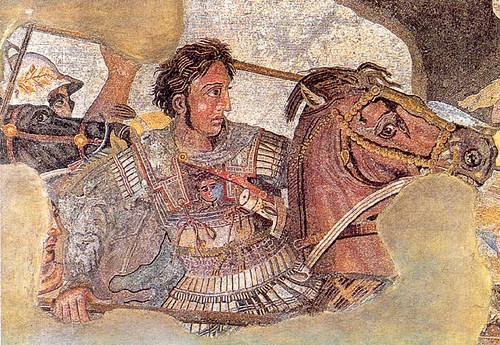
The tales of the overwhelming strength of Dhanananda's forces contributed to the mutiny of Alexander's soldiers who forced him to abandon his conquest of India and turn back to Mesopotamia. Alexander had already destabilized the region, however, through his invasion, the subjugation of various hostile tribes and kingdoms, and his clash with King Porus of Paurava (r. c. 326-c. 315 BCE) at the Battle of the Hydaspes River in 326 BCE.
Porus is said to have told Alexander he could easily topple Magadha because Dhanananda was so unpopular that the people would support Alexander's cause. Whether Porus actually said this, Dhanananda's arrogance and disdain for his people is well-established but there was no one to challenge his reign until he made the mistake of insulting the Brahmin Chanakya (whom the scholar Chirag Patel identifies as one of the king's advisors) at an alms-giving ceremony and, afterwards, Chanakya swore revenge.
He approached Dhanananda's son Pabbata, encouraging him to depose his father, but also took an interest in a young man who may have been part of the royal family or may have been a commoner, Chandragupta, identified by Patel as “a ten-year-old orphan farmhand” (7). To test their characters, he gave them each an amulet they were to wear closely around their neck on a thread of wool. Chanakya then told Pabbata to go to Chandragupta's chamber while he was sleeping and bring back his amulet without breaking the woolen thread. Pabbata failed at this and so Chanakya made the same request of Chandragupta later when Pabbata was sleeping.
Chandragupta cut off Pabbata's head without hesitation and brought his teacher the amulet. By this action, Chandragupta showed himself the ideal candidate for kingship as envisioned by Chanakya: one who saw what needed to be done and was able to do it. Chanakya then focused his energies on training Chandragupta to be king and the Arthashastra can be considered the manual Chandragupta was tutored in. Once Chanakya considered Chandragupta properly trained, the two of them mounted an offensive against Dhanananda, deposed and killed him, and Chandragupta took the throne.
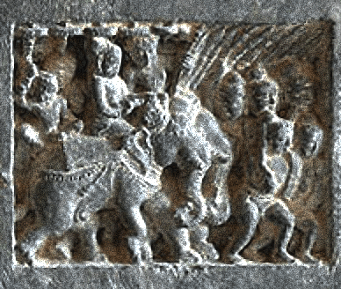
On the King's Role & Responsibilities
The principal focus of the political sections of the Arthashastra is the meaning of kingship and how a ruler should comport himself. True kingship is defined as a ruler's subordination of his own desires and ambitions to the good of his people:
In the happiness of his subjects lies the king's happiness, in their welfare, his welfare. He shall not consider as good only that which pleases him but treat as beneficial to him whatever pleases his subjects. (Arthashastra, I.19.34)
This does not mean that the king is not to lead nor that he should subject his decisions to any sort of consent by the majority but, rather, that a king's policies should reflect a concern for the greatest good for the greatest number of his subjects. The preservation and advancement of this good was comprised of seven vital elements:
- King – who served the people
- Ministers/Counselors – who served the king
- Farmlands/Countryside – which provided resources
- Fortresses – which protected resources and extended control
- Treasury – which maintained government and funded expansion
- Military – which defended the state and expanded it
- Allies – potential enemies who could be made friends to achieve common goals
A weak king – such as Dhanananda – will place his own desires first and behave selfishly to gratify his own sense of self-importance. This type of king will most likely ignore the wise counsel of his ministers if it contradicts his personal vision, will make poor use of farmlands and the treasury, value fortresses and the military only in times of crisis, and neglect alliances unless they flatter his ego. A wise king, conversely, will recognize that he has been given a great responsibility – the care of his subjects – and will accept wise counsel and make the most of the other aspects of the state. Allies will be courted regardless of the king's personal feelings toward them and fortresses will be constructed, not simply as outposts to deter invasion, but as extensions of the king's territory and symbols of his strength.
Warfare as Politics
The king's strength and command are considered the most important aspect of his public image and this is best expressed through the concept of warfare as an extension of one's political power. The Arthashastra suggests a king wage wars of expansion when the economy is strong and the nation prospering so that one will have a reserve of resources in leaner economic periods. The treasury should be maintained at a comfortable level at all times and military campaigns should not be launched, no matter the provocation, if one cannot afford a prolonged engagement. Peace is preferable to war, the text asserts, because times of peace are productive and lead to abundance while wars are destructive and drain one's resources. Even so, war is a fact of life and the author defines three types of warfare which a king must both engage in and be wary of:
- Open War – full engagement in battle by the military
- Covert War – engagement through political manipulation
- Silent War – economic/personal attacks including espionage and assassination
In any of these types of war, Kautilya emphasizes the importance of spies since intelligence is power and the more one knows of an enemy's motivations, strengths, and weaknesses, the better one's position. The king should employ those in the most common professions as spies who could insinuate themselves easily into any level of an enemy's social structure to gather as much information as possible.
Merchants who traveled with their goods between regions were considered good prospects as were vagabond troupes of entertainers, prostitutes, dancers, cooks, servants, and others of the lower classes who provided services. Women were considered especially skilled spies in that Kautilya notes their ability to extract information from lovers so casually that no one would suspect any ulterior motive and, further, are able to sow discord among members of a foreign court by feigning affection for first one and then another of the male courtiers. In discussing female spies, Kautilya's description of the occupations open to women at this time is impressive in that he notes how women served as the elite bodyguards to the king, could own and farm land, and work independently as artisans.
Economy & Society
The economy was based on agriculture, as it was in most if not all ancient civilizations, and so Kautilya emphasizes the importance of robust agricultural initiatives for an abundant harvest which will go toward filling the state's treasury. Taxes, however, must be fair to all and easily understood by the king's subjects. Some businesses were state owned and operated and others were private, but both were subject to the same tax laws. No one, Kautilya writes, is to be considered above or outside of the law, whether in regard to taxation or any other aspect of society, so that people can feel confident that the laws are just and they are protected and cared for.
This paradigm is clearly seen in the law code of the Arthashastra where it is stipulated that the punishment must fit the crime; too lenient, and it serves as no deterrent but, too harsh, it appears unjust. Punishment, therefore, must be administered in accordance with clear and established law and custom so that it is understood as the just consequences of one's actions in defiance of that law and with full knowledge of what one must expect for breaking it. Book III of the text outlines civil law while Book IV deals with criminal law. Any infraction which fell under criminal law was pursued with the State as plaintiff, since such crimes were considered injustices perpetrated against the State (and so the people as a whole) with State officials serving also as the prosecution.
The social customs addressed adhered to Hindu traditions but the Arthashastra goes to some lengths in stipulating how marriages should operate. According to traditional Hindu custom, the parents of a girl would arrange a marriage with an acceptable boy of the same caste who showed promise of financial stability and a bright future. Kautilya, in Books II, III, and IV, states that a girl should be free to marry anyone she chooses as long as she respects her parents' property rights. If the parents approve of, or arrange, a marriage then the girl may take from her parents' home anything she has received from them; if not, then she may take nothing. Couples who marry for love, with their parents' approval, are to be considered the most fortunate and receive the maximum in property, rights, and gifts from their parents.
The text also stipulates that people should work jobs in accordance with their caste (varna):
- Brahmana varna – highest caste, teachers, priests, intellectuals
- Kshatriya varna – warriors, police, protectors, guardians, and the king
- Vaishya varna – merchants, farmers bankers, clerks
- Shudra varna – lowest caste, servants, laborers, unskilled workers
These castes were not legally codified until the 2nd century BCE by the treatise Manusmriti (Laws of Manu) but existed as custom previously. Adherence to the varna system was thought to encourage the pursuit of what was considered Human Aims:
- Artha – acquisition of material wealth, pursuit of career, home life
- Kama – sensual pleasure, love, sexuality
- Moksha – self-actualization, liberation, enlightenment
The proper behavior of a strong, just king ensured the stability for his subjects to pursue these aims within the strictures of their respective castes. Throughout the entirety of the Arthashastra, it is made clear that the king is solely responsible for how well the kingdom functions and so the king must be willing and able to pursue any course of action, no matter how seemingly questionable or personally distasteful, to ensure the stability and success of the State.
Conclusion
The Arthashastra is thought to have paved the way for Chandragupta's success as well as that of his grandson Ashoka the Great (r. 268-232 BCE). The work was considered lost, its existence only known through references to it in later pieces, until it was discovered by Shamasastry in 1905 CE. Shamasastry published the work in 1909 CE and then translated it into an English version published in 1915 CE which brought Arthashastra to the attention of a world-wide audience. It has since been recognized as one of the most important works on statecraft in the genre of political philosophy. Scholars Margaret and James Stutley comment:
The purpose of the Artha is evident. It sought to establish a relationship both social and economic between the various groups comprising the State, and between the State and its neighbors; an ideal often initially achieved peaceably, but the ambitions of princes and the demands of the economy, especially those depending on overseas trade, led to wars to protect trade routes, and the acquisition of territory to provide new sources of food and raw materials. (19)
The central thrust of the work could be said to be inspired by the episode – whether it actually happened or is legendary – when Chanakya sent Chandragupta to remove the woolen thread and amulet from around Pabbata's neck. By chopping off the prince's head to accomplish the goal, Chandragupta proved to his mentor that he was willing to do anything to succeed.
This concept of the ruler defined as one who sees what must be done and is willing to do it, no matter how distasteful or morally questionable, would later form the basis of Machiavelli's The Prince which, to greater or lesser degrees, informed later European treatises on statecraft. The Arthashastra continues to be studied today in conjunction with The Prince and other political treatises, not only in political science courses at universities, but by any who wish to learn the principles by which a state functions and the role a true leader should play in the care and nurture of the people who have placed their trust in the promises of their government.
